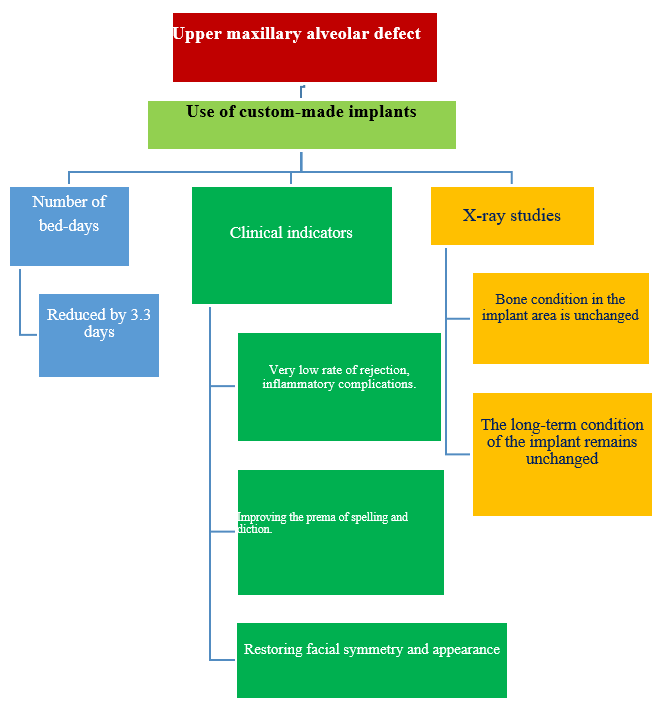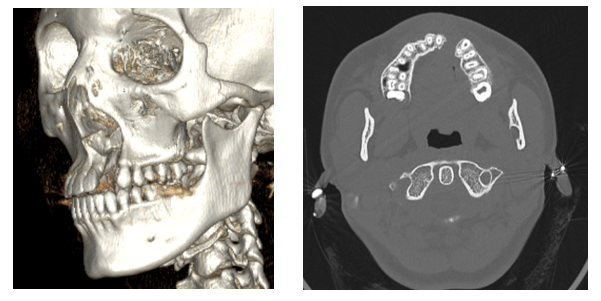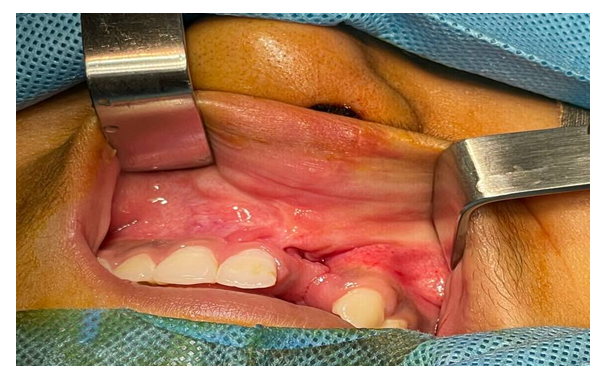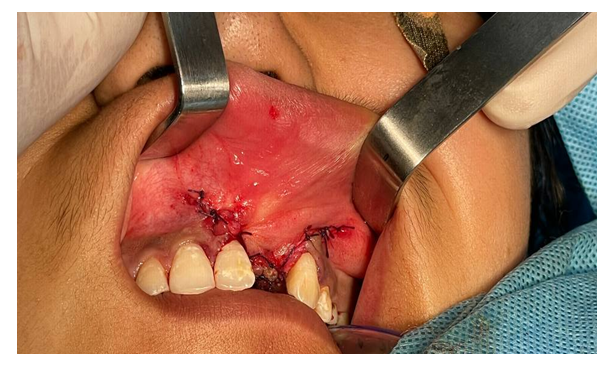-
Paper Information
- Next Paper
- Previous Paper
- Paper Submission
-
Journal Information
- About This Journal
- Editorial Board
- Current Issue
- Archive
- Author Guidelines
- Contact Us
American Journal of Medicine and Medical Sciences
p-ISSN: 2165-901X e-ISSN: 2165-9036
2022; 12(10): 1030-1033
doi:10.5923/j.ajmms.20221210.04
Received: Sep. 20, 2022; Accepted: Oct. 9, 2022; Published: Oct. 14, 2022

Restoration of Alveolar Defects of the Top Justice with Individual Titan Constructions for Connected Chind of the Face and Lip
Tozhiev F. I. 1, Karimov Sh. I. 2, Sharopov S. G. 3, Murtazaev S. M. 4, Azimov A. M. 5, Ismoilkhujaeva K. G. 6
1Assistant of Pediatric Maxillofacial Surgery Tashkent State Institute of Dentistry, Uzbekistan
2Resident of MA Tashkent State Institute of Dentistry, Uzbekistan
3Assistant of Maxillofacial Surgery, Tashkent State Institute of Dentistry
4Professor of Pediatric Maxillofacial Surgery, Tashkent State Institute of Dentistry, Uzbekistan
5Associate Professor of Pediatric Maxillofacial Surgery, Tashkent State Institute of Dentistry, Uzbekistan
6Student of Stomatological Faculty, Tashkent State Institute of Dentistry, Uzbekistan
Copyright © 2022 The Author(s). Published by Scientific & Academic Publishing.
This work is licensed under the Creative Commons Attribution International License (CC BY).
http://creativecommons.org/licenses/by/4.0/

Congenital malformations of the maxillofacial region are one of the most important problems of medicine due to their frequency, severity of anatomical and functional disturbances, difficulty of social adaptation of patients, economic aspects. The incidence of congenital malformations in the population is an important characteristic of public health. The prevalence of birth defects is an important characteristic of public health. According to WHO, the incidence of children with cleft lip and palate is on average 1:750 newborns, representing 20-30% of all human malformations and 86% of malformations of the chin. In recent decades, there has been an upward trend in the incidence of this malformation, as well as birth defects in general, due to the increased impact of toxic substances on the body, due to the intensive development of industry, particularly the chemical industry.
Keywords: Congenital malformations of the maxillofacial region, Cleft lip, Palate and alveolar process
Cite this paper: Tozhiev F. I. , Karimov Sh. I. , Sharopov S. G. , Murtazaev S. M. , Azimov A. M. , Ismoilkhujaeva K. G. , Restoration of Alveolar Defects of the Top Justice with Individual Titan Constructions for Connected Chind of the Face and Lip, American Journal of Medicine and Medical Sciences, Vol. 12 No. 10, 2022, pp. 1030-1033. doi: 10.5923/j.ajmms.20221210.04.
1. Introduction
- Despite the long history of the treatment of children with TMJD, there is still no consensus on the timing and methods of surgical treatment to achieve optimal anatomical, cosmetic and functional results. Elimination of maxillary cleft is one of the top priorities in the comprehensive rehabilitation of children with TMJD.Research aim: to improve the effectiveness of surgical stage in complex rehabilitation of children with congenital cleft maxilla, palate and alveolar process by developing new technology of alveoloplasty and by developing the method of result estimation.
2. Material and Methods
- 24 patients with congenital cleft lip and palate of 18 to 20 years old were under our examination and treatment. Of them 9 were male and 15 female. The patients were examined and operated in the department of pediatric maxillofacial surgery of the TSSI clinic in Tashkent.
3. Results and Discussion
- Restoration of the maxillary process continuity in the case of TMJD has several positive effects simultaneously. Firstly, the growth and development of the maxilla is normalised. Secondly, the reconstructed alveolar process provides a framework for the operated lip as well as the nose and also affects the development of the upper jaw. For a successful operation, the surgeon should not only be aware of the size of the defect of the alveolar process, but also assess the relationship between the upper jaw and the lower jaw for the subsequent operation.All patients received orthodontic treatment for a long period of time and the displacement of the split maxillary fragments was minimal. The most unfavourable situation was observed in bilateral TMH, where intermaxillary bone protrusion persisted to a lesser extent, but still persisted. In order to assess the clinical effect of the use of custom-made implants, a comparative analysis with standard treatment methods was carried out according to clinical, radiological indicators (bone condition in the area of implant fixation) and bed days. For this purpose, a scheme for assessing the effectiveness of custom-made implants was developed.
 | Figure 1. Classification of the maxillary alveolar defect |
 | Figure 2. Radiological picture before treatment |
 | Figure 3. 3D modelling and modelled wax template of an endoprosthesis that accurately corrects the defect |
 | Figure 4. Defects in the alveolar process of the upper jaw |
 | Figure 5. By closing the maxillary sinus defect with individually fabricated titanium implants |
 | Figure 6. Suturing to repair a maxillary ridging defect with individually fabricated titanium implants |
4. Conclusions
- We can conclude that custom-made titanium implants are functionally superior to standard treatment methods due to the precision of the reconstruction of the upper jaw bone defect shape 1:1. Individually fabricated implants, reproduced according to MSCT data, most accurately recreate the anatomical shape of the jaw, at the same time being a universal implant. In addition, the use of individually fabricated implants allows early orthopaedic treatment of patients, as titanium is a stable material and does not resorb over time, unlike allo- and autografts.
 Abstract
Abstract Reference
Reference Full-Text PDF
Full-Text PDF Full-text HTML
Full-text HTML